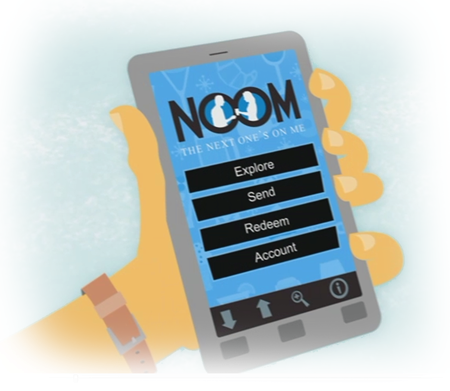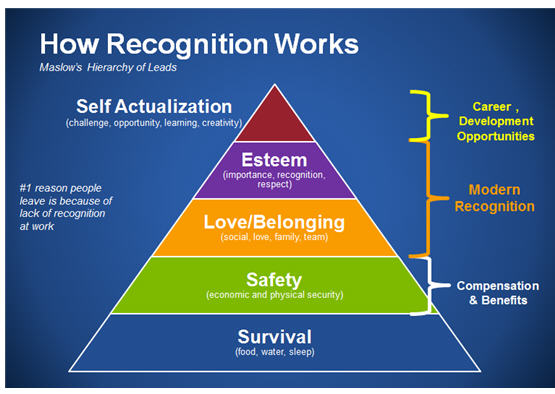We recently highlighted staffing secrets for recruiting great employees. But once top talent is acquired, the next hurdle is retaining them. In this article, we look at employee retention from a happy place: quite literally. What is it that keeps today’s employees happy? And, in this age of digital disconnect, can technology help increase employee satisfaction? One Austin, TX, startup has set out to prove it can.
The key to happy employees begins with basic psychology. Remember Maslov’s hierarchy of needs? Happiness cannot be achieved without a sense of belonging and respect among one’s peers. According to Josh Bersin, founder and principal at Bersin by Deloitte, recognition is the single most important way for employers to help staff achieve job satisfaction within this model. Translating Maslov’s hierarchy into employment terms, Bersin places modern recognition as an important tool for employers once the “safety” level of compensation/benefits is met and before career/development opportunities can be optimized. It’s at this pinnacle “self-actualization” level where challenge, opportunity, learning, and creativity can thrive.
While most of us are familiar with this way of thinking, employee recognition programs seem to be missing the boat. Globoforce Workforce Mood Tracker report suggests that half of the U.S. workforce is not satisfied with the level of recognition received on the job. The problem rests here: the idea of “modern” recognition is different than “traditional” recognition.
Only 17 percent of employees who participated in Bersin & Associates’ The State of Employee Recognition 2012 study indicated their organizations’ cultures strongly support recognition, whether that organization has a formal program in place or not. Among those with formal recognition programs, 87 percent reported their programs are designed to recognize service milestones or tenure only. In other words, these companies are investing time and resources in formal recognition like plaques and certificates given annually or on employment anniversaries.
While that type of recognition was the standard several decades ago, it’s no longer as effective with younger generations (under 55 years of age). Today’s workforce is motivated by other factors like immediate, specific feedback (rewarding actions, not tenure) coupled with peer-to-peer recognition. And there’s research to back it up. SHRM/Globoforce reports peer-to-peer recognition can lead to positive increases to key business metrics across the board. HR managers participating in the organizations’ joint Employee Recognition Survey: Fall 2012 Report credit peer-to-peer recognition for the following positive results:
- 57% increase in engagement
- 41% increase in customer satisfaction
- 32% increase in customer retention
- 32% increase in productivity
- 28% increase in employee retention
One group of Austin, TX entrepreneurs embraced this idea of modern recognition with NOOM (Next One’s On Me Inc.), a mobile app that allows users to treat others to food and drink items via smart phone and online portal. The user can send small denomination gifts, called NOOMs, in three different categories: Treats, Beer, and Bar & Bites. These NOOMs function like open-ended gift certificates, with the recipient having the power to choose where to redeem the treats among the participating restaurants, bars and coffee shops/bakeries (currently available in Austin and Houston). While the app started as a social tool among friends, it is quickly turning into a useful corporate application.
“We built NOOM to provide people an easy, inexpensive, yet meaningful way to have differentiated interactions with friends, family members, coworkers and clients,” says NOOM’s Co-founder Jeffrey Schwartz. For recognition purposes, the app fills an important gap when it comes to showing appreciation for someone who helped with a presentation or stayed late to complete a project, for instance.
“It’s immediate, direct recognition at an appropriate level, for those occasions when flowers or dinner would be over-the-top or when a simple thank you note or text isn’t quite enough,” Schwartz explains. It’s the idea of direct recognition based on a specific action that Schwartz points out as the key to making NOOM an ideal corporate tool.
Companies like NOOM are helping corporations reimage employee recognition programs by making it easier to allow immediate recognition based on actions, and to encourage peer-to-peer recognition in the process. Imagine the possibilities that would open up if a company purchased, say, 1,000 NOOMs and encouraged employees to share them whenever and wherever they feel appreciation is deserved.
Image 1: Courtesy of Forbes/Bersin by Deloitte




